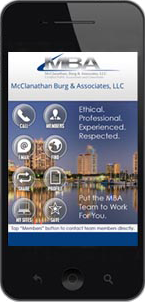FAQs about Social Security Retirement Benefits

For years, people have questioned the long-term viability of the Social Security system. In June, the Social Security Board of Trustees released its annual report on the long-term financial status of the Social Security Trust Funds. It projects that the combined asset reserves of the Old-Age and Survivors Insurance and Disability Insurance (OASDI) Trust Funds will become depleted in 2034. Additionally, the Disability Insurance Trust Fund will become depleted in 2023.
More generally, people approaching retirement age often have other questions about benefits they may be eligible to receive from the Social Security Administration (SSA). Here are the answers to several common inquiries.
How Soon Can I Start Collecting Retirement Benefits?
If you want to receive full retirement benefits from the SSA, you must wait until you reach the so-called full retirement age (FRA). But you may apply for benefits as early as age 62. Starting early will reduce your monthly benefits by as much as 30%, but, of course, you’ll receive benefits for more years. Your tax adviser can help figure out the exact monthly benefit reduction and help you determine if you likely will be better off waiting until your FRA to start taking benefits.
What Is My FRA?
Your FRA depends on the year in which you were born.
| Year of Birth | Full Retirement Age |
| 1937 or earlier | 65 |
| 1938 | 65 and 2 months |
| 1939 | 65 and 4 months |
| 1940 | 65 and 6 months |
| 1941 | 65 and 8 months |
| 1942 | 65 and 10 months |
| 1943–1954 | 66 |
| 1955 | 66 and 2 months |
| 1956 | 66 and 4 months |
| 1957 | 66 and 6 months |
| 1958 | 66 and 8 months |
| 1959 | 66 and 10 months |
| 1960 and later | 67 |
If you were born on January 1 of any year, refer to the previous year. If you were born on the first of the month, the SSA figures your benefit (and your FRA) as if your birthday were in the previous month.
How and When Do I Apply for Social Security Retirement Benefits?
Apply for retirement benefits three months before you want your payments to start. The SSA may request certain documents in order to pay benefits, including:
- Your original birth certificate or other proof of birth,
- Proof of U.S. citizenship or lawful alien status if you were not born in the United States,
- A copy of your U.S. military service paper(s) if you performed military service before 1968, and
- A copy of your W-2 Form(s) and/or self-employment tax return for the prior year.
For most retirees, the easiest way to apply for benefits is by using the online application.
What Happens if I Receive Social Security Retirement Benefits While Still Working?
If you’re under FRA and earn more than the annual limit (subject to inflation indexing), your benefits will be reduced, as follows:
- If you’re under FRA for the entire year, you forfeit $1 in benefits for every $2 earned above the annual limit. For 2016, the limit is $15,720.
- In the year in which you reach FRA, you forfeit $1 in benefits for every $3 earned above a separate limit, but only for earnings before the month you reach FRA. The limit in 2016 is $41,880.
Beginning with the month in which you reach FRA, you can receive your benefits without regard to your earnings.
Can I Collect More Benefits if I Retire After My FRA?
You can receive increased monthly benefits by applying for Social Security after reaching FRA. The benefits may increase by as much as 32% if you wait until age 70, but of course you’ll receive benefits for fewer years. After age 70, there is no further increase. Your tax adviser can help calculate the payout for waiting to collect your retirement benefits and help you determine if you likely will be better off waiting beyond your FRA to start taking benefits.
Can I Manage Retirement Benefits for an Incapacitated Person?
If a Social Security recipient needs help managing his or her retirement benefits — perhaps an elderly parent — contact your local Social Security office. You must apply to become that person’s representative payee in order to assume responsibility for using the funds for the recipient’s benefit.
Do I Qualify for Social Security Survivors Benefits?
A spouse and children of a deceased person may be eligible for benefits based on the deceased’s earnings record as follows:
A widow or widower can receive benefits:
- At age 60 or older,
- At age 50 or older if disabled, or
- At any age if she or he takes care of a child of the deceased who is younger than age 16 or disabled.
A surviving ex-spouse might also be eligible for benefits under certain circumstances. In addition, unmarried children can receive benefits if they’re:
- Younger than age 18 (or up to age 19 if they are attending elementary or secondary school full-time), or
- Any age and were disabled before age 22 and remain disabled.
Under certain circumstances, benefits also can be paid to stepchildren, grandchildren, stepgrandchildren or adopted children. In addition, dependent parents age 62 or older who received at least one-half support from the deceased may be eligible to receive benefits.
A one-time payment of $255 may be made only to a spouse or child if he or she meets certain requirements. Survivors must apply for this payment within two years of the date of death.
Are Social Security Benefits Subject to Income Tax?
You’ll be taxed on Social Security benefits if your provisional income (PI) exceeds the thresholds within a two-tier system.
PI between $32,000 and $44,000 ($25,000 and $34,000 for single filers). Recipients in this range are taxed on the lesser of 1) one-half of their benefits or 2) 50% of the amount by which PI exceeds $32,000 ($25,000 for single filers).
PI above $44,000 ($34,000 for single filers). Recipients above this threshold are taxed on 85% of the amount by which PI exceeds $44,000 ($34,000 for single filers) plus the lesser of 1) the amount determined under the first tier or 2) $6,000 ($4,500 for single filers).
PI equals the sum of 1) your adjusted gross income, 2) your tax-exempt interest income, and 3) one-half of the Social Security benefits received.
If you have additional questions about receiving Social Security retirement benefits, contact your financial adviser. He or she can help you navigate the application process and understand tax issues related to receiving retirement benefits.
Highlights of New Trustees ReportIn its annual report to Congress, the Social Security Board of Trustees announced that the asset reserves of the combined Old-Age and Survivors Insurance and Disability Insurance (OASDI) Trust Funds increased by $23 billion in 2015. The combined trust fund reserves are still growing and will continue to do so through 2019. Here are some other highlights from the report:
Even though the income exceeded expenses from the OASDI Trust Funds and asset reserves increased in 2015, the reserves are projected to be gradually depleted over the next 18 years. Unless Congress takes action to reverse the situation, the OASDI Trust Funds are expected to be insolvent by 2034. This underscores the importance of saving for retirement while you’re working. Social Security benefits should be viewed only as a supplement to your other assets. |
© Copyright 2016. All rights reserved.
Brought to you by: McClanathan, Burg & Associates, LLC




